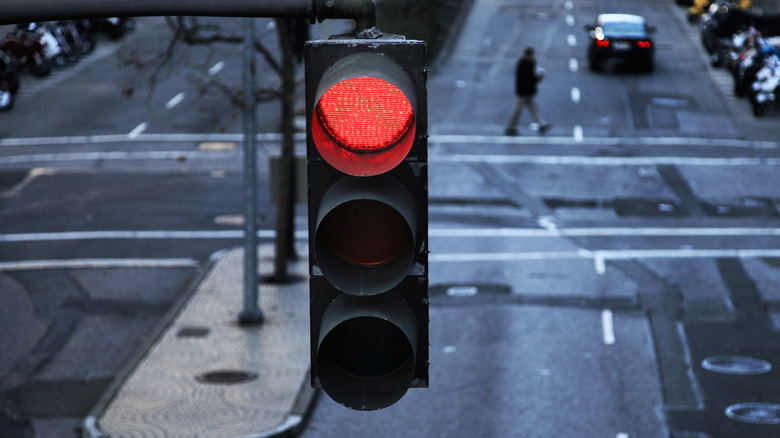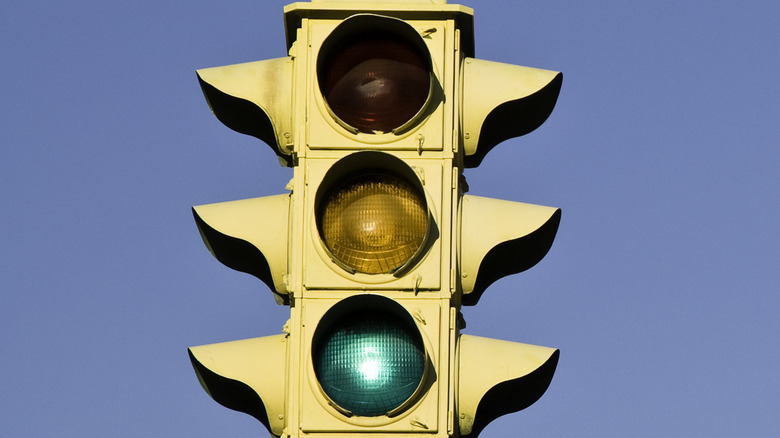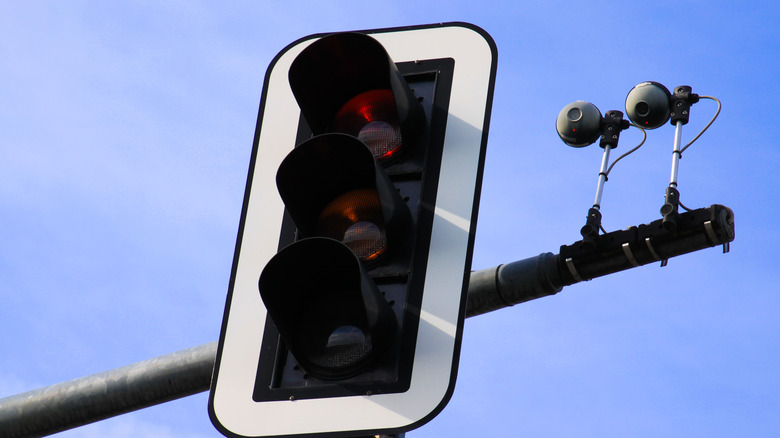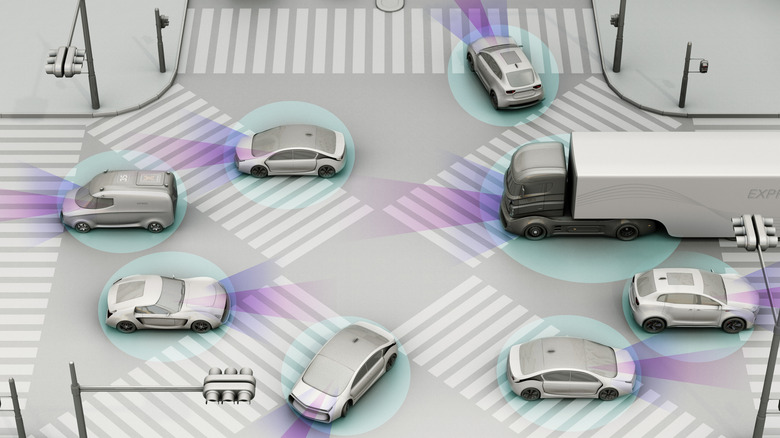Here's How Traffic Lights Actually Work, And How They Detect Your Car
The concept of the traffic light actually dates all the way back to the 1860s, where gas-lit signals were placed on the posh streets that lined the Houses of Parliament in London. Of course, back then, nothing was automated; a police officer would be on standby, monitoring the traffic and manually changing the signal as necessary. It wouldn't be until the 1910s that the first electric traffic signals would crop up in the United States, followed by interconnected systems and four-way lights in subsequent decades.
While the traffic lights we know and love (or at least tolerate) today seem simple in their operation, there's actually quite the impressive network keeping everything running behind the scenes. Some traffic lights are more advanced than others, employing various kinds of sensors to expedite and optimize traffic, and as technology continues to advance, we may see them connect not just with other road signals but even our own cars.
Basic traffic light systems
Most of the traffic lights installed around the world don't actually have any kind of sensor technology installed. Instead, basic traffic lights operate based on internal timers. Regardless of the presence of cars at an intersection, the lights flip between green, yellow, and red based on nothing but how much time has elapsed. When the light turns red, an invisible countdown begins before the light eventually turns green at zero.
There's a bit of a problem with this kind of traffic light, though. While it's functional (albeit annoying) on busy roads, in some parts of the country, particularly rural areas and intersections between major and minor roads, the flow of traffic may not be consistent enough that a typical timer regulates everything cleanly. When there's not a lot of traffic coming in general or from a particular direction, forcing everything to stop at the same interval just causes unnecessary stops and slows the entire road down.
Have you ever been stopped at an intersection, and one of the entry points is some small back road or the entrance to a small shopping plaza — and no one's in it? You think, "Why do we all have to stop just for that one little road?" It's because the traffic light's timer said so, regardless of whether or not it was a good idea.
Car-sensitive traffic lights
Back in the 1950s, in an effort to remedy the problem of poorly timed traffic signals, some traffic lights began to utilize pressure plates on the stop line. When a car stops on this plate, an electric signal is sent to the light, prompting it to change to accommodate the waiting car. As the years passed, this framework became the modern standard for traffic lights, though different lights detect cars in different ways.
In an evolution of the pressure plate system, some lights respond to an induction coil hidden under the road on the stop line which generates a magnetic field that will change due to the presence of metallic objects above. It's the same concept as the pressure plate but a bit more discrete and easier to drive over. The only real problem with this approach is that motorcycles may not generate enough of a field difference to trigger the sensors.
Besides that, some intersections make use of car sensing technology, whether through infrared sensors, microwave sensors, or cameras. Whichever way they go about doing it, the concept is more or less the same — sensors note both the presence of cars on or near the stop line, as well as the number of cars lined up. If one direction of an intersection has more cars backed up, the light switches signals to prioritize clearing out that lane.
Direct interaction and the future of traffic lights
For a few decades now, certain emergency vehicles like police, ambulances, and fire trucks have had the ability to directly control or influence traffic lights in order to cut down on response time. Depending on the kinds of systems and sensors in place, an emergency vehicle can either send a direct signal to a light to keep the lane flowing, or the sensor can detect flashing emergency lights to keep the signal green. This is very important, as emergency response vehicles can't be waiting around for lights to change.
However, as automotive technology progresses, we may find that even civilian vehicles have the ability to influence lights directly, at least to an extent. Using a combination of sensors and localized Wi-Fi signals, special smart traffic lights could temporarily connect right to a sufficiently advanced vehicle like an EV. This connection would both inform the light that the vehicle is present and waiting at the stop line and inform the driver of exactly how long it'll be before the signal changes.
Automotive manufacturers have been tinkering with this notion since the late 2010s, and if it were implemented, it would go a long way toward optimizing the flow of traffic. Of course, it can't work until every single car on the road is either an electric vehicle or at least equipped with compatible technology, but that's just another step in the ever-growing automotive field.



